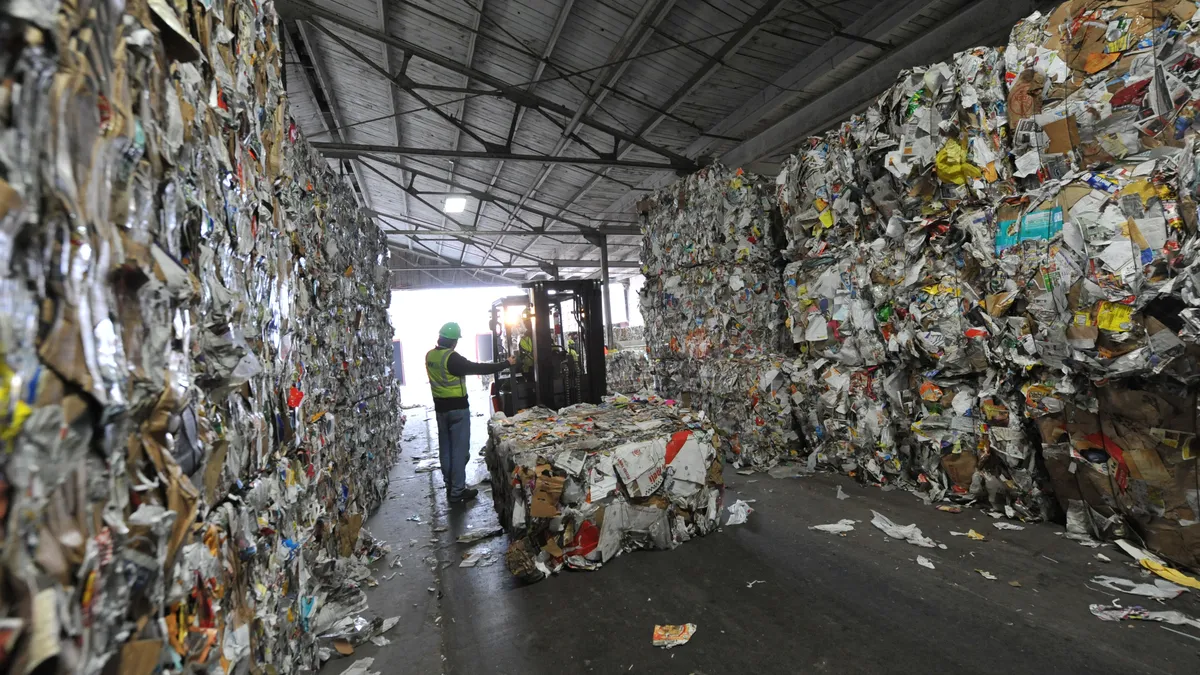Q1 Earnings
| Revenue | $3.51B |
| YoY Change | 2.1%▲ |
| YoY Recycling Revenue | $77M▼ |
The vast majority of Waste Management's business is performing at high levels, but all anyone wants to talk about is recycling. The topic got just as much attention, if not more, during the company's Q1 earnings call than it has since China's import announcement last summer.
Recycling:
- CEO Jim Fish estimated average contamination rates have nearly doubled in the past five years, with some MRFs seeing upward of 40%. He said "the irony of diversion" is that it's not often factored into the results. "...We believe that recycling should be the goal, not diversion, because diversion ultimately just means that it ends up getting processed through our plant, but still ends up going to a landfill."
- Transportation costs are up now that China is only taking about 2% of Waste Management's cardboard — down from 30% — and other Southeast Asian markets are picking up some of the slack. This is coupled with higher operating costs at MRFs, making it different than past commodity shifts.
- Overall commodity prices are down 36% compared to this time last year, and volume dipped by 1%. The company's push to get rid of floor prices and high commodity risk in contracts over the past few years was credited as the reason this hasn't taken an even great financial toll. Now, Waste Management is also looking to increase its processing fees.
With everything else holding steady, recycling has essentially become one of the company's biggest variables. While Fish confirmed this won't mean moving away from single-stream, because "we're too far down the path," it's clear that financial terms will continue to evolve.
In the same way it has talked about using greenhouse gas emissions reduction rather than tonnage as a metric, Waste Management is now seeking to influence both vocabulary and perceptions around how recycling should work. Following the annual sustainability form, and its pledge to "battle against contamination," this marks the latest step toward regaining control of what has been a somewhat frenetic narrative in the industry post-China.
Waste Management often touts its status as the largest recycler in North America, and is adept at the public messaging that entails, but its business model also means that's a relatively small part of a much bigger picture.
After his standing quarterly interview with Fish, CNBC's Jim Cramer expressed confusion as to why analysts had devoted so much time to the topic because recycling "is not what they do for a living." During the call, Fish made a similar point himself, saying that "...recycling is one-tenth the size of the solid waste business and the solid waste business is absolutely rocking and rolling right now."
Collection & Disposal:
At various points Fish said the business was as "strong as we have ever seen," with "absolutely ridiculous" EBITDA growth, and called this one of the most positive quarters of his career.
- Collection and disposal revenues were up by $183 million. Solid waste volumes were up by 3.4%. While residential is expected to stay fairly level, company executives were more optimistic about commercial and industrial growth.
- EBITDA was up by 7.8%, or $69 million, in what Fish called an "underappreciated story." EBITDA margins have continued to increase over the last four years.
- That trend was also seen in the landfill business, where volumes were up across the board to a total of 26.2 million tons. MSW went up by 2.2% and C&D by 28.1% (largely due to natural disaster clean-ups). Transfer station volumes also went up 6.4%.
Spending:
With everything else but recycling looking good, Waste Management is continuing to spend big. An even lower-than-expected effective tax rate (23% for Q1 and 24-25% for 2018) has only helped.
- The company "returned more than 100% of the free cash flow we generated to shareholders" in the form of $206 million in dividends and $250 million in share repurchases. Estimated share buybacks for the year could total $750 million.
- M&A spending on "seven or eight" tuck-ins accounted for $248 million during the first quarter and there will be more to come. "I think that the opportunities are out there and we're aggressively seeking them as the other industry participants are. And the climate is just good for those tuck-in acquisitions at this point," said COO Jim Trevathan.
- Capital expenditures totaled $400 million, $68 million more than planned, due to fleet and landfill investments. Though the company still expects to hit its same budgeted projection of $1.6-1.7 billion for the year.















